
We were privileged to be able to attend this sale just before Christmas. The venue – the Bonhams premises in the very centre of London’s West End – is amazing in itself. The cars were set out on two floors with plenty of room to look into the details of the cars (apart from a few tight spots: was it a Bora or a Merak? One more mince pie and we wouldn’t have been able to get round the side to make sure.) Among the 30 cars on offer, here are the ones that particularly caught our attention.
1925 Bugatti Type 30 Skiff Bodied Tourer by Kelsch & Cie. of Paris
Offered for sale by the noted Bugatti authority David Sewell, this delightful car was bodied by Kelsch, known for their lightweight sporting coachwork. Introduced in 1922, the 3-litre Type 30 was the first production Bugatti with the classic ‘square-cut’ straight-eight engine.
A side view of the car shows its delicate sporting lines.
1961 Alfa Romeo Giulietta Spider
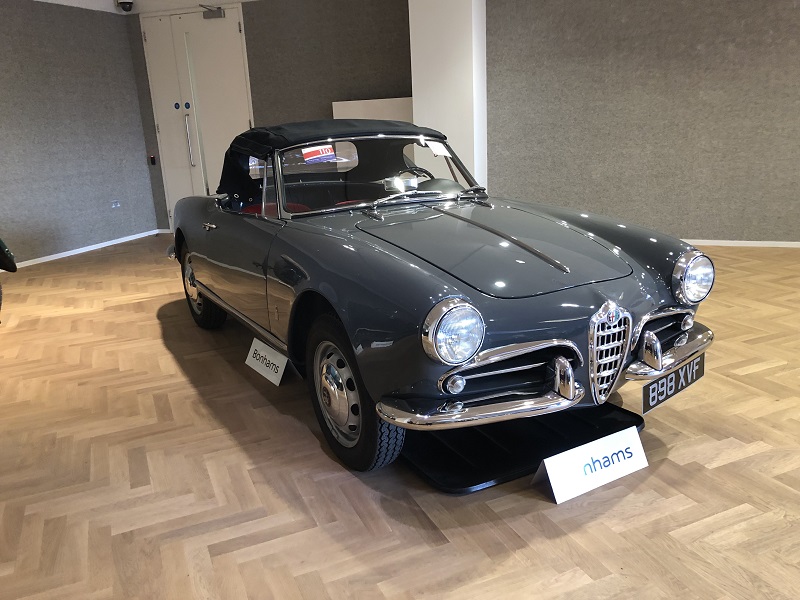 This was one of two favourites within the group of us who were at the viewing. Max Hoffman, the American importer of European cars who also convinced Mercedes-Benz to build the 300SL Gullwing, suggested that Alfa Romeo should build an open roadster to compete with the small British sports cars that were so popular in North America at the time. Pininfarina designed and built the original coupé version of 1955 and this lovely Spider variant.
This was one of two favourites within the group of us who were at the viewing. Max Hoffman, the American importer of European cars who also convinced Mercedes-Benz to build the 300SL Gullwing, suggested that Alfa Romeo should build an open roadster to compete with the small British sports cars that were so popular in North America at the time. Pininfarina designed and built the original coupé version of 1955 and this lovely Spider variant.
1976 Aston Martin Lagonda Series 1
This is a rare car. One of only eight made, it has been extensively upgraded by Aston Martin specialists R S Williams, including an increase from 5.3 to 7.0 litres displacement (480bhp vs. original 320bhp) and conversion from manual ZF to Chrysler Torqueflite transmission – but all changes have been made reversible.
1937 SS 100 Jaguar 2½-Litre Two-seater Sports
This car was the 1937 RAC Rally winner and 1937 Monte Carlo Rally entrant and RSAC trophy winner. The SS 100 model was launched in 1936 and was the first genuine high-performance model produced by SS Cars Limited. It used a new Weslake-developed overhead-valve engine in a shortened SS 1 chassis. It was also the first model to add the name ‘Jaguar’, William Lyons later recalling “I immediately pounced on Jaguar as it had an exciting sound to me”. Jaguar became the marque name in 1943.
1958 Porsche 356A T2 Coupé with Coachwork by Reutter
This right-hand drive Porsche 356A was supplied new from the factory to a customer in Kenya and stayed there until 1999 until being shipped to respected Belgian Porsche restorers RSC Automobile for a full restoration.
1961 Bentley S2 Continental Park Ward Drophead Coupé
The Continental S2 chassis is distinguished from the standard version by its four-leading-shoe front brakes, shorter radiator and, up to chassis number ‘BC99BY’, higher gearing. It is a well known fact that you must always know the chassis number of any Rolls-Royce-made motor car that you own or about which you write, otherwise you will be drummed out of whichever club of which you are a member. This is BC4LBY, one of 125 drophead coupés built by Park Ward on the S2 Continental chassis, of which 63 were left-hand drive like this example. The chassis number is useful, since cars are sometimes converted from left-hand drive to RHD or vice-versa – and the L in this number denotes LHD. So this one is correct.
1950 Aston Martin Two-Litre Sports Drophead Coupé (DB1)
Another very rare car. This Two-Litre Sports is the model that started the ‘David Brown’ era at Aston Martin. The chassis was a direct development of the prototype Atom, with tubular construction and independent front suspension by trailing arms. The 1,970cc overhead-valve engine predates the W O Bentley and later Tadek Marek twin OHC units. The body was designed by the talented Frank Feeley, based on sketches he had made pre-war for the Lagonda V12. It probably influenced other post-war designs such as that of the Sunbeam Alpine. Only 15 production models were made, plus one Team Car. This is Chassis number 10.
1954 Lancia Aurelia B20 GT Series IV Coupé
This was the favourite among our group, both for its looks and for the brilliant engineering under the body. The Lancia Aurelia was launched in 1950 and was the first car in the world with a V6 engine. The 1,754cc all-aluminium 60-degree V6 used overhead valves operated via short pushrods instead of Lancia’s traditional overhead camshafts. The advanced monocoque body retained Lancia’s ‘sliding pillar’ independent front suspension but used another world first: a semi-trailing-arm layout at the rear. The transmission comprised a transaxle with inboard rear brakes. The B10 saloon was joined in 1951 by this design, the Pinin Farina-styled B20 Coupé, a fastback ‘2+2’ on a shortened wheelbase. It has the 2,451cc, 118bhp engine and De Dion rear suspension of the Series IV cars.








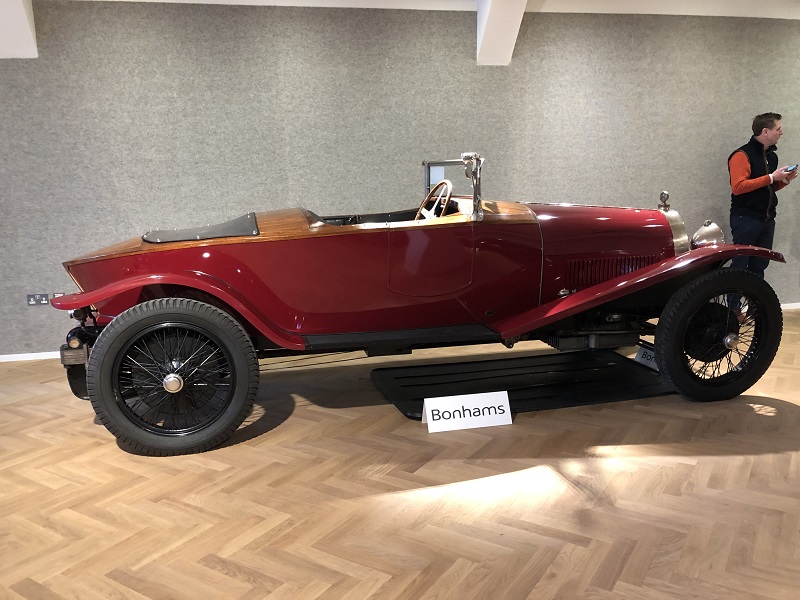

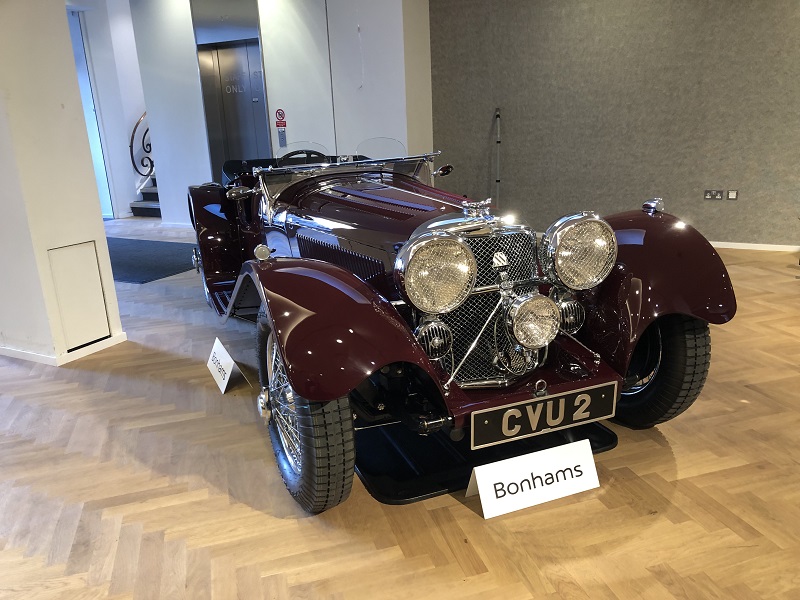
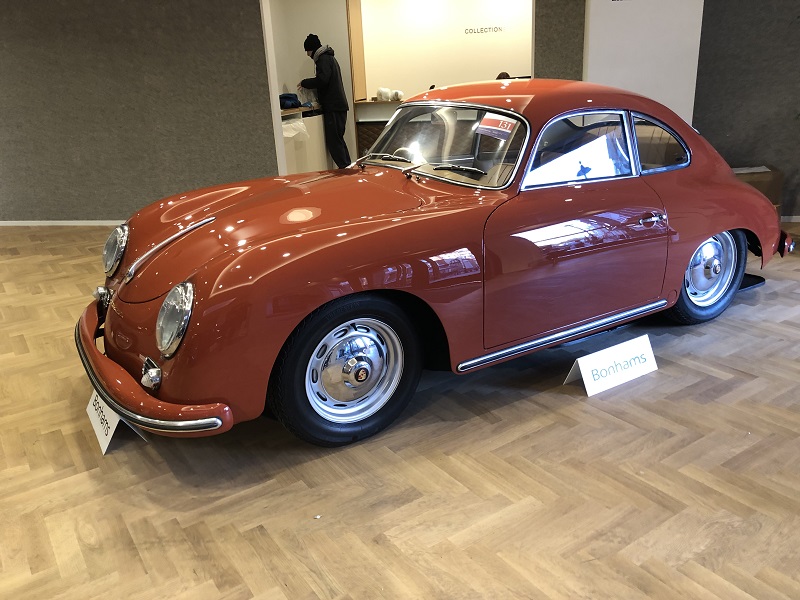

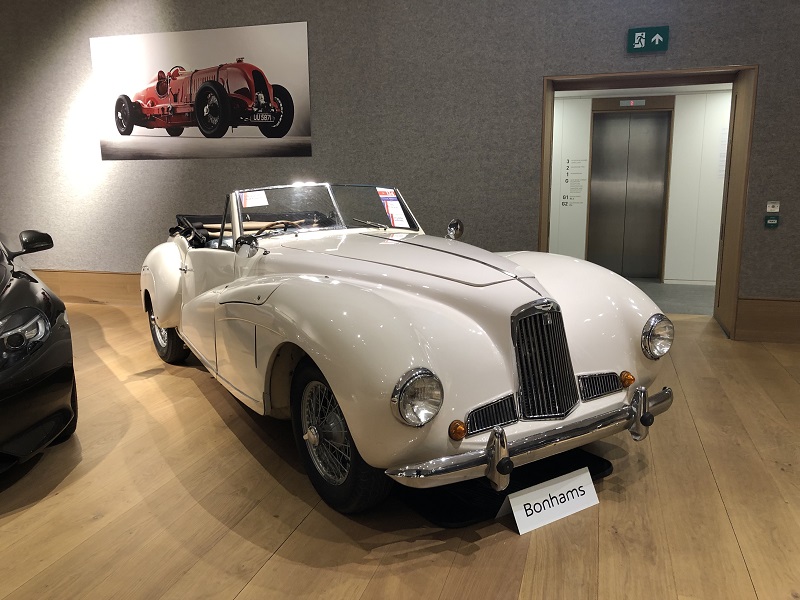

Leave a Comment